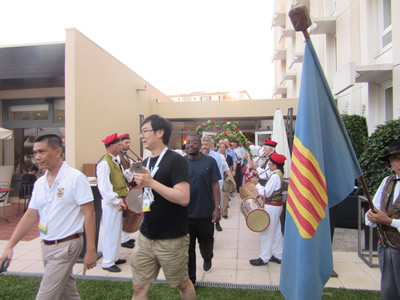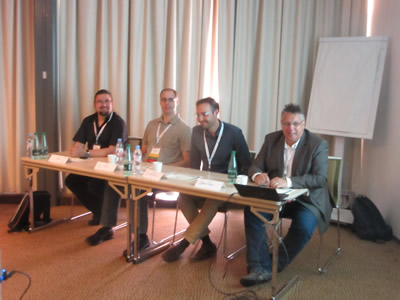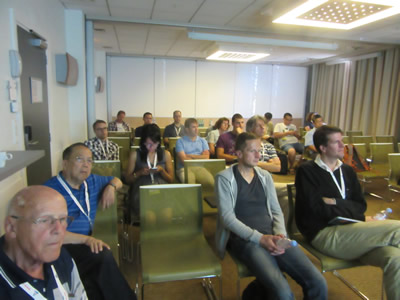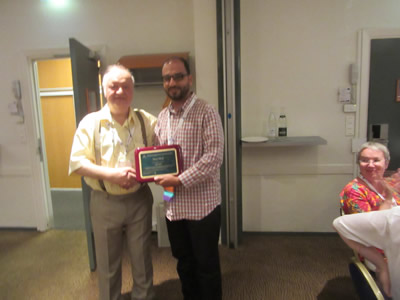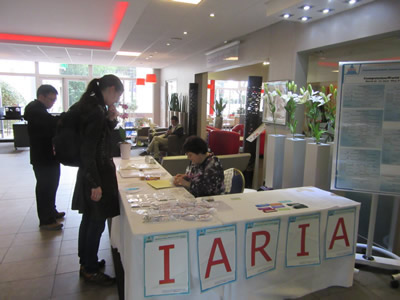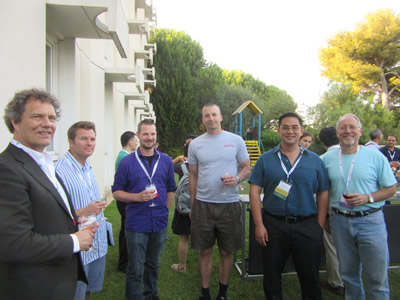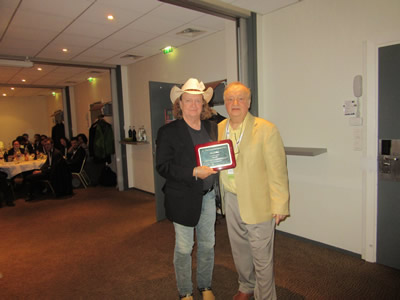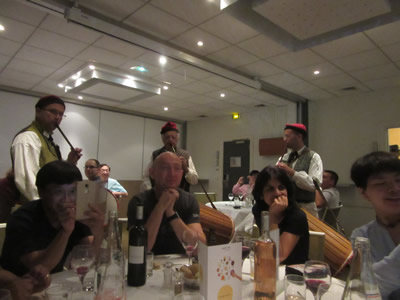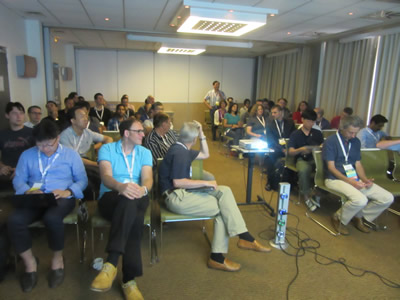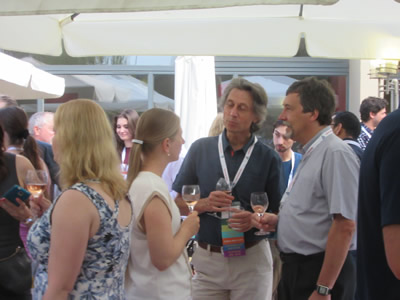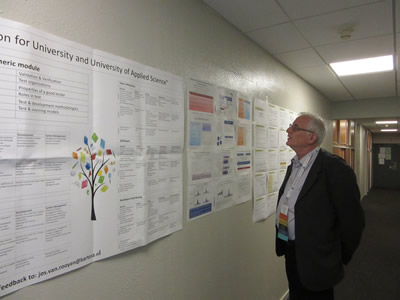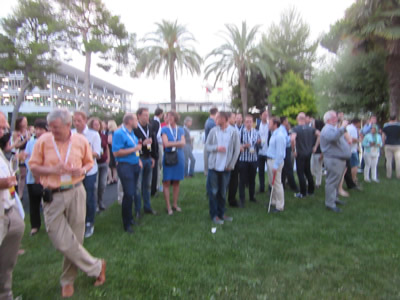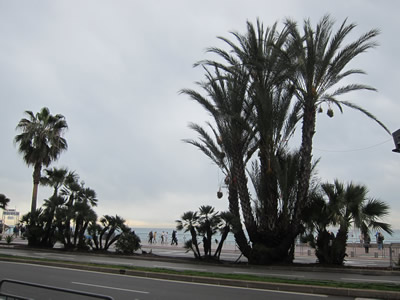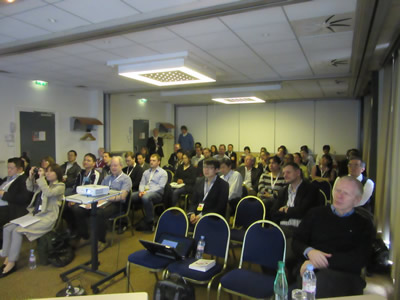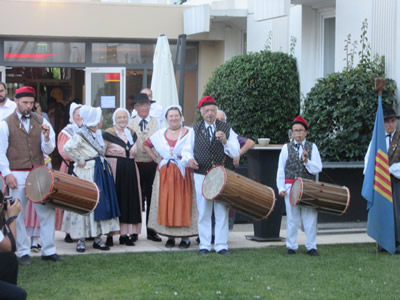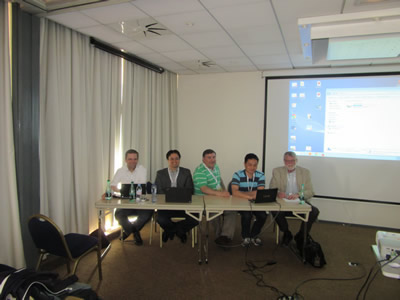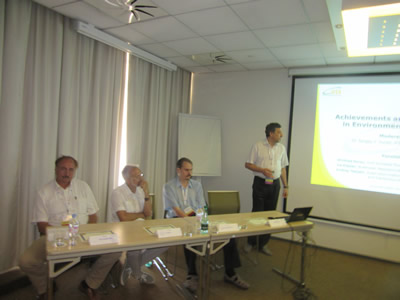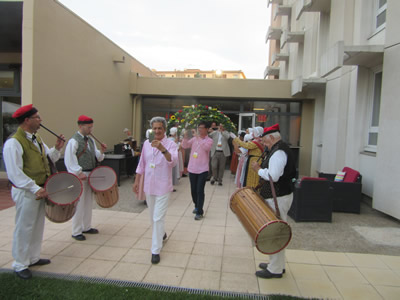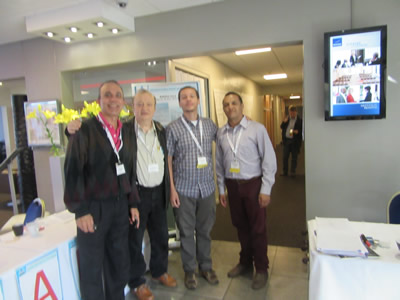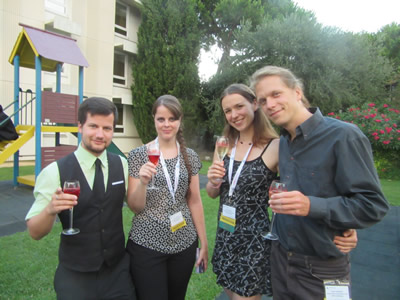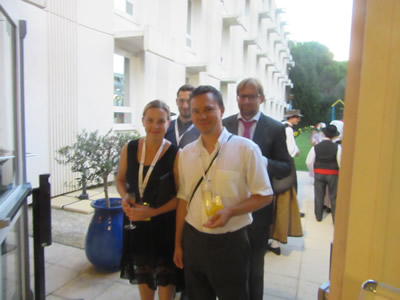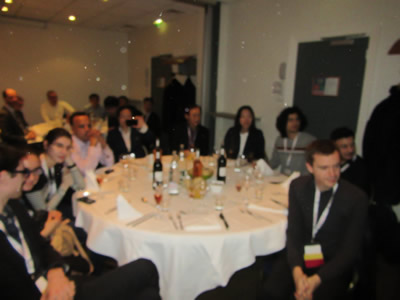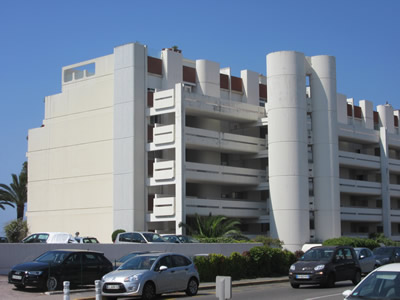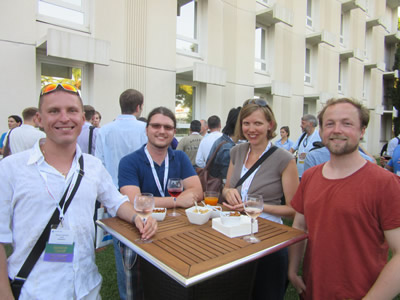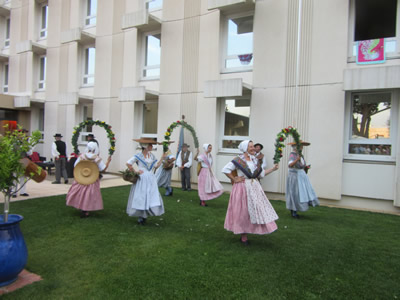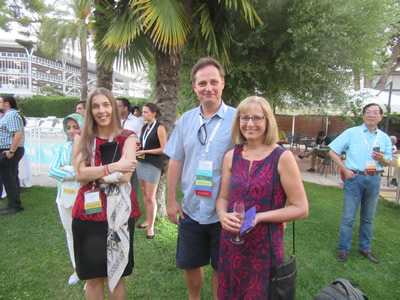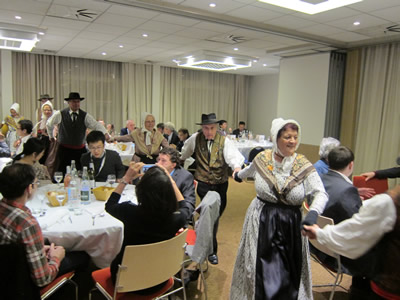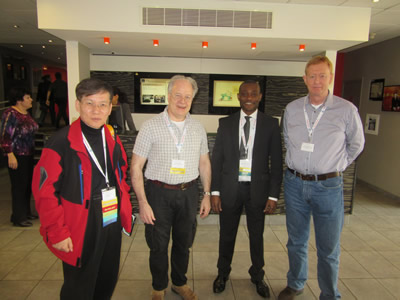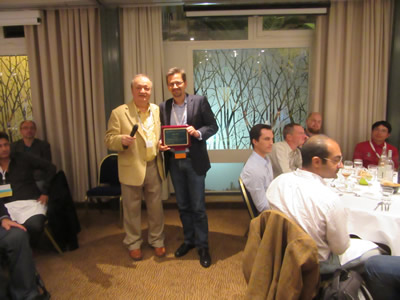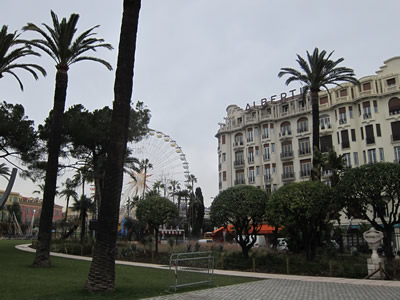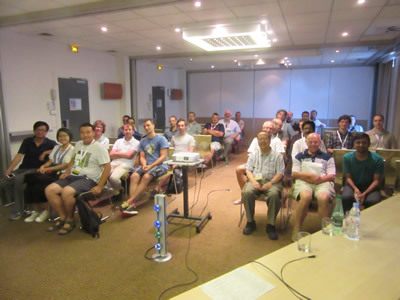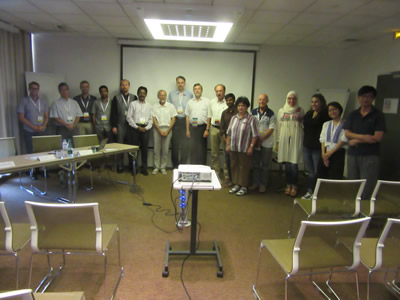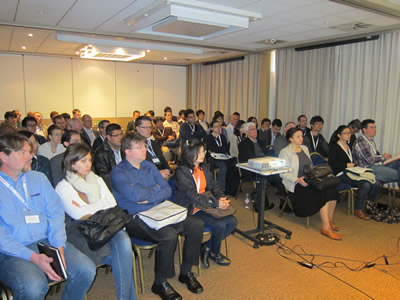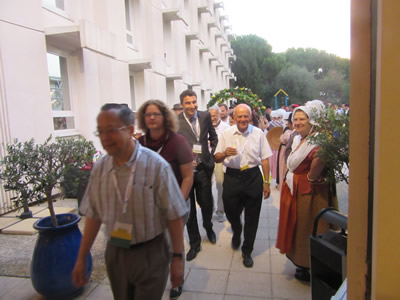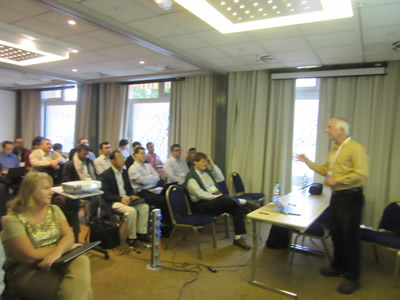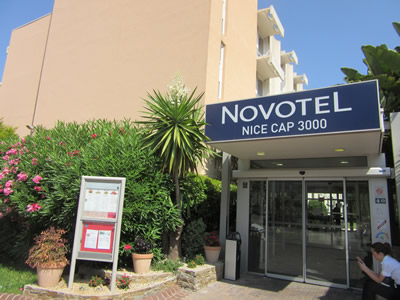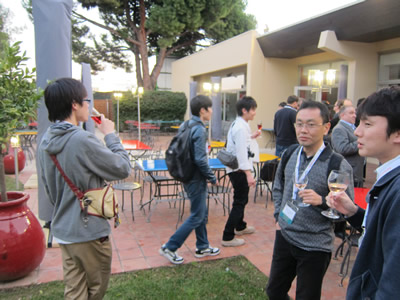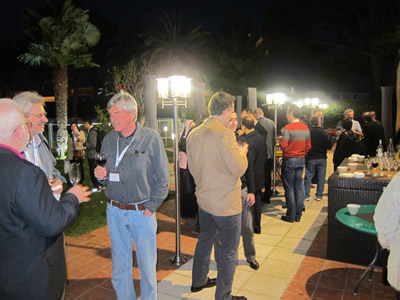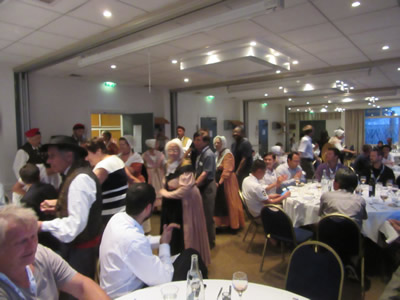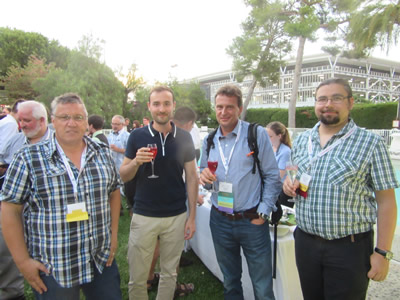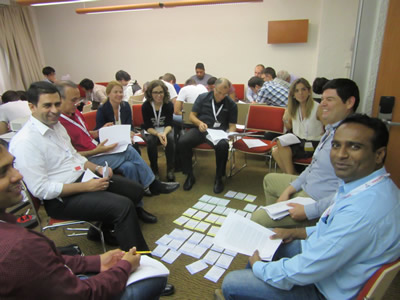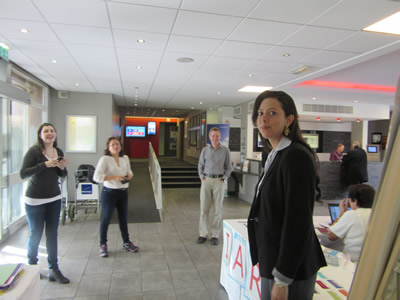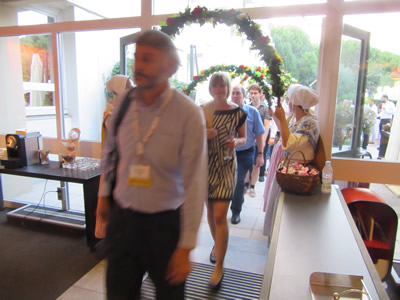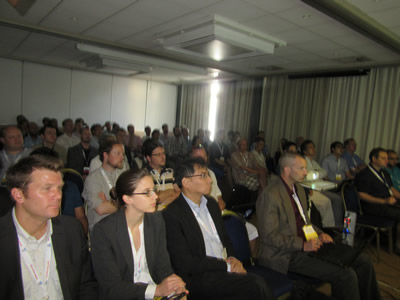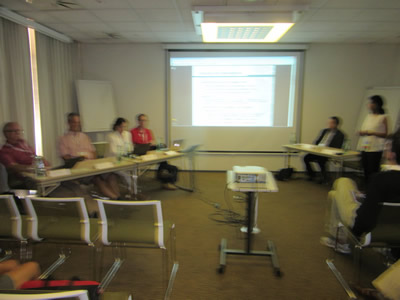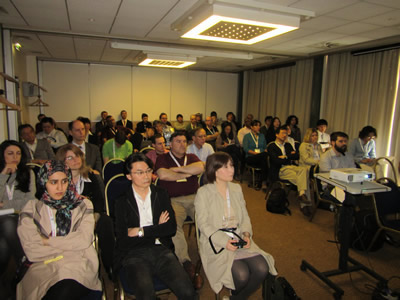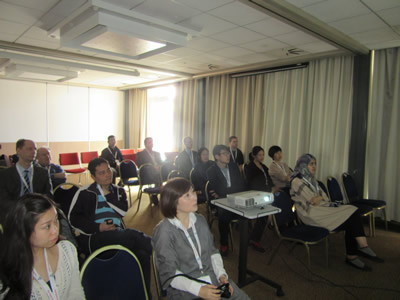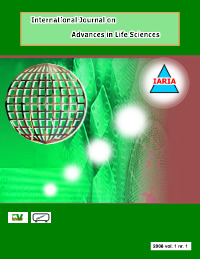BIONATURE 2018 - The Ninth International Conference on Bioenvironment, Biodiversity and Renewable Energies
May 20, 2018 - May 24, 2018
BIONATURE 2018: Call for Papers
The initially separated events under the BIOGREEN, BIOINVASION, and BIOENVIRONMENT conferences are now grouped in a consolidated event covering the three mentioned areas (environment, biodiversity and invasion, and renewable and sustainable energies)
Area A: Bioenvironment (climate, global warming, hydrology, wind science, pollution, economics)
Environmental change awareness is a key state of spirit and legislation for preventing, protecting, and ultimately saving the planet biodiversity. Technical and practical methods for applying bio-agriculture for the public’s health and safety are primary targets. The goal is the use of ecological economic stimuli in tandem with social and governmental actions preventing deforestation, pollution, and global warming. To cope with the climate and landscape changes advanced technical inventory of tools and statistics on lessons learned are needed to derive appropriate measure and plan accordingly.
Area B: Biodiversity and invasion control
The biologic equilibrium on its vast immensity is a challenge for both knowledge gathering and its understanding. Preserving the existing species under rapid economy, one the one side, and using the diversity of environmental species for industrial purposes is a very week balance. There is a risk of for ever damaging the existence of thousands of species, or miss the opportunity of using them for the benefit of humanity. Therefore, measuring and interpreting the impact of human actions on the diversity on marine and oceanic life, on Arctic and Antarctic bio-climate, or on forest ecosystems represent one way to prevent ecological disasters and predict possible environmental changes. The event deals with such ecosystem diversity, and the use of their existence for humanity in terms of industrial products, drug production, but also in terms of studying and modeling the ecological degradation, such loss of Poles’ ice, food-chain dependency survival, wildlife endurance, or ozone holes. It also bring to the stage different disruption side-effect of the landscape changes, detection and warning systems, invasion of alien species, and the need for public awareness and education.
Area C: Renewable and Sustainable Energies
Replacing the classical energy with alternative renewable energy (green energy), such as bioenergy, eolian energy, or solar energy is an ecological and economic trend that suggests important socio-economic advantages: using native renewable resources, increasing of self-sufficiency rate of energy and promoting use of clean energy, and that way, polluting emissions to the air will be reduced. Bioenergy is renewable energy derived from biological sources, to be used for heat, electricity, or vehicle fuel. Biofuel derived from plant materials is among the most rapidly growing renewable energy technologies. In several countries corn-based ethanol is currently the largest source of biofuel as a gasoline substitute or additive. Recent energy legislation mandates further growth of both corn-based and advanced biofuels from other sources. Growing biofuel demand has implications for U.S. and world agriculture. Eolian energy is currently used throughout the world on a large scale. In the past decade, its evolution shows its acceptance as a source of generation, with expressive growth trends in the energy matrices in the countries where this source is used Eolian energy is renewable and has very low environmental impact. To generate it, there are no gas emissions, no effluent refuse, and no other natural resources, such as water, are consumed. Photovoltaic technology makes use of the energy in the sun, and it has little impact on the environment. Photovoltaics can be used in a wide range of products, from small consumer items to large commercial solar electric systems. The event bring together the challenging technical and regulation aspects for supporting and producing renewable energy with less or no impact on the ecosystems. There are several technical integration barriers and steps for social adoption and governmental legislation to favor and encourage this kind of energy.
We solicit both academic, research, and industrial contributions. We welcome technical papers presenting research and practical results, position papers addressing the pros and cons of specific proposals, such as those being discussed in the standard fora or in industry consortia, survey papers addressing the key problems and solutions on any of the above topics short papers on work in progress, and panel proposals.
Industrial presentations are not subject to the format and content constraints of regular submissions. We expect short and long presentations that express industrial position and status.
Tutorials on specific related topics and panels on challenging areas are encouraged.
The topics suggested by the conference can be discussed in term of concepts, state of the art, research, standards, implementations, running experiments, applications, and industrial case studies. Authors are invited to submit complete unpublished papers, which are not under review in any other conference or journal in the following, but not limited to, topic areas.
All topics and submission formats are open to both research and industry contributions.
BIONATURE 2018 conference tracks:
A. Bioenvironment (climate, global warming, hydrology, wind science, pollution, economics)
- Climate (Climate change; Global warming; Greenhouse gases; Deforestation; Bio-safety and occupational health, sea level rise, climate adaptation);Global temperature assessment; Ocean acidification; Climate indicators
- Hydrology (Global water cycle; Stream flow and river discharge; River runoff; Wetland hydrology; Lakes and Reservoirs; Precipitations; Snow; Flood; Drought; Hydropower; Waterways; Water infrastructures; Water management; Glacier melting; Soil moisture; Evapotranspiration; Groundwater; Water resources; Water quality; Extreme hydrology)
- Wind science (wind streams; wind-driven seed invasion; wind forecasts; tornados; in-land and off-shore winds, soil moisture, hurricanes)
- Cryosphere (Arctic sea ice reduction and environmental impacts, Antarctic sea ice change, contrast between Arctic and Antarctic sea ice behaviors, sea ice classification, sea ice thickness and dynamic trajectories, sea ice forecast and prediction, ice sheet mass balance, permafrost, snow cover, lake and river ice, atmospheric chemistry)
- Public health (Pollution; Acid rains; Pollution impact (light, air, drinking water, earth, respiratory health, planetary oceans); Pollution factors (toxins, chemical, nuclear, garbage, noise); Carbon dioxide pollution; Biological pollution (invasion); Pollution prevention, control and engineering); Natural and man-made disasters
- Economics (Ecological economics; Bio-agriculture; Environmental impacts of aquaculture; Bio-industry, Urban change, Mega urban, Population dynamics, Rural-urban transformation)
- Responsibility (Social responsibility; Corporate responsibilities; Government responsibilities, Carbon footprint, Oil spill, Global mercury treaty)
B. Biodiversity and invasion control (marine, oceanic, Arctic(Antarctic, forests, bioinvasion)
- Marine & oceanic bio-technologies (Marine science; Microbiology am marine eco-systems; Measuring impact of organic pollutants; Marine-derived drugs; Drug discovery sand marine -derived compounds; Cosmetics; Nutritional Supplements; Artificial bones; Glues for mussels; Heat resistant enzymes)
- Oceanic bio-diversity (Coastal health; Measurement and predictions; Environmental change predictions; Reef and marine ecosystems; Microscopic plankton; Diagnostic and therapeutic agents; Bio-mineralization and nano-technologies; Aquaculture; Algology, Ocean acidification)
- Arctic and Antarctic bio-pulse (Resource exploitation and large-scale eco- perturbations; Under-ice ecosystems; Adaptation and survival strategies; Food-chain dependence survival; Aeronomy; Monitoring ozone holes; Polar stratospheric clouds; Glaceology; Loss of ice modeling; Ice shelves’ move prediction; Wildlife and endurance in cold eco-systems, Bromine explosion, Mercury deposition)
- Forest landscape (Monitoring landscape changes; Methods and tools to assess and manage changes; Conservation criteria; Restoration planning; Patterns and processes in changing landscapes; Scaling in landscape analysis; Disruptions in landscape changes; Biodiversity conservation during landscape planning and changing; Management and sustainability of changing landscapes, Wildland-urban interface, Wetland change, Land cover/land use, Wildfire)
- Bioinvasion (Detection and warning systems; Control and sustainable management; Risk assessment; Invasive species; Ecological adaptation; Fragmentation and scale effect; Biological invasions and climate change; International conventions on biological invasions; Public awareness and education)
C. Renewable and Sustainable Energies
- Energy sustainability (Big consumers; Small consumers; Active consumers; Passive consumers; Energy-intensive technologies; Energy-intensive devices; Energy-intensive services and applications; Energy-intensive mission-critical applications; Energy-intensive safety applications; Home appliance consumption; Smart grid solutions; Telecommunications energy efficient solutions; Energy control and optimization in data centers; Interfaces for energy interchange; Alternative energy sources)
- Energy bioscience (Bioenergy, biopower, biofuels; Bioprocessing solutions; Physical biosciences; Photosynthetic systems; Energy transduction systems; Ultrasonic technologies; Geothermal energy; Ocean thermal energy; Ocean waves energy; Ocean tides energy; Vibration based, piezoelectric, and nanogenerators; Body pulse; Hybrid energy)
- Eolian Energy (Wind energy turbines; Wind farms; Eolian production systems; Storage for eolian energy; Integration between eolian systems and classical energy systems; Independent and corporate producers; Feed-in tariffs)
- Photovoltaic solar energy (Solar energy; Solar collector; Collector systems; Solar energy utilization; Solar Photochemistry; Energetic potential; Storage for eolian energy)
- Biomass energy (Plant and non-medical microbial systems; Thermo-chemical conversion of biomass fuels; Feedstock development (switchgrass, miscanthus, etc.); Biomass depolymerization; Biofuels production; Fossil fuel bioprocessing; Cleaner energy from renewable plant materials; Ethanol plants and bio-refineries)
- Green energy technologies and economic models (Chemistry and nanotechnology to improve biodiesel production; Potential of mitigation of atmospheric change through the development of herbaceous energy crop; Development of accessible mechanistic mathematical models; Environmental effects on photosynthesis to plant productivity; Social acceptability of energy crops; Legislation and standards; Economic, environmental, and social challenges for renewable energy)
Deadlines:
Submission | Feb 07, 2018 |
Notification | Mar 11, 2018 |
Registration | Mar 24, 2018 |
Camera ready | Apr 03, 2018 |
Deadlines differ for special tracks. Please consult the conference home page for special tracks Call for Papers (if any).
INSTRUCTION FOR THE AUTHORS
Authors of selected papers will be invited to submit extended versions to one of the IARIA Journals.
Publisher: XPS (Xpert Publishing Services)
Archived: ThinkMindTM Digital Library (free access)
Prints available at Curran Associates, Inc.
How to submit to appropriate indexes.
Only .pdf or .doc files will be accepted for paper submission. All received submissions will be acknowledged via an automated system.
Contribution types
- regular papers [in the proceedings, digital library]
- short papers (work in progress) [in the proceedings, digital library]
- ideas: two pages [in the proceedings, digital library]
- extended abstracts: two pages [in the proceedings, digital library]
- posters: two pages [in the proceedings, digital library]
- posters: slide only [slide-deck posted on www.iaria.org]
- presentations: slide only [slide-deck posted on www.iaria.org]
- demos: two pages [posted on www.iaria.org]
FORMATS
Only .pdf or .doc files will be accepted for paper submission. All received submissions will be acknowledged via an automated system.
Final author manuscripts will be 8.5" x 11", not exceeding 6 pages; max 4 extra pages allowed at additional cost.
Helpful information for paper formatting for MS Word can be found here.
There is a community provided LaTeX template: the CTAN package iaria (with full IARIA formatting rules, including IARIA citation style, but for providing citation style it is tightly bound to pdflatex+biblatex+biber). In addition, there is also iaria-lite (not bound to pdflatex+biblatex+biber, but compatible with any TeX stack; thus, it cannot provide the IARIA citation formattings, but only the titlepage and content-related IARIA formatting rules). Based on the iaria package, there is a minimal working example as Overleaf template. When you are using the LaTeX templates, please still adhere to the additional editorial rules.
Slides-based contributions can use the corporate/university format and style.
Your paper should also comply with the additional editorial rules.
Once you receive the notification of contribution acceptance, you will be provided by the publisher an online author kit with all the steps an author needs to follow to submit the final version. The author kits URL will be included in the letter of acceptance.
We would recommend that you should not use too many extra pages, even if you can afford the extra fees. No more than 2 contributions per event are recommended, as each contribution must be separately registered and paid for. At least one author of each accepted paper must register to ensure that the paper will be included in the conference proceedings and in the digital library, or posted on the www.iaria.org (for slide-based contributions).
CONTRIBUTION TYPE
Regular Papers (up to 6-10 page article -6 pages covered the by regular registration; max 4 extra pages allowed at additional cost- ) (oral presentation)
These contributions could be academic or industrial research, survey, white, implementation-oriented, architecture-oriented, white papers, etc. They will be included in the proceedings, posted in the free-access ThinkMind digital library and sent for indexing. Please submit the contributions following the instructions for the regular submissions using the "Submit a Paper" button and selecting the appropriate contribution type. 12-14 presentation slides are suggested.
Short papers (work in progress) (up to 4 pages long) (oral presentation)
Work-in-progress contributions are welcome. These contributions represent partial achievements of longer-term projects. They could be academic or industrial research, survey, white, implementation-oriented, architecture-oriented, white papers, etc. Please submit the contributions following the instructions for the regular submissions using the "Submit a Paper" button and selecting the contribution type as work in progress. Contributors must follow the conference deadlines, describing early research and novel skeleton ideas in the areas of the conference topics. The work will be published in the conference proceedings, posted in the free-access ThinkMind digital library and sent for indexing. For more details, see the Work in Progress explanation page. 12-14 presentation slides are suggested.
Ideas contributions (2 pages long) (oral presentation)
This category is dedicated to new ideas in their very early stage. Idea contributions are expression of yet to be developed approaches, with pros/cons, not yet consolidated. Ideas contributions are intended for a debate and audience feedback. Please submit the contributions following the instructions for the regular submissions using the "Submit a Paper" button and selecting the contribution type as Idea. Contributors must follow the conference deadlines, describing early research and novel skeleton ideas in the areas of the conference topics. The work will be published in the conference proceedings, posted in the free-access ThinkMind digital library and sent for indexing. For more details, see the Ideas explanation page. 12-14 presentation slides are suggested.
Extended abstracts (2 pages long) (oral presentation)
Extended abstracts summarize a long potential publication with noticeable results. It is intended for sharing yet to be written, or further on intended for a journal publication. Please submit the contributions following the instructions for the regular submissions using the "Submit a Paper" button and selecting the contribution type as Extended abstract. Contributors must follow the conference deadlines, describing early research and novel skeleton ideas in the areas of the conference topics. The work will be published in the conference proceedings, posted in the free-access ThinkMind digital library and sent for indexing. 12-14 presentation slides are suggested.
Posters (paper-based, two pages long) (oral presentation)
Posters are intended for ongoing research projects, concrete realizations, or industrial applications/projects presentations. The poster may be presented during sessions reserved for posters, or mixed with presentation of articles of similar topic. A two-page paper summarizes a presentation intended to be a POSTER. This allows an author to summarize a series of results and expose them via a big number of figures, graphics and tables. Please submit the contributions following the instructions for the regular submissions using the "Submit a Paper" button and selecting the contribution type as Poster Two Pages. Contributors must follow the conference deadlines, describing early research and novel skeleton ideas in the areas of the conference topics. The work will be published in the conference proceedings, posted in the free-access ThinkMind digital library and sent for indexing. 8-10 presentation slides are suggested. Also a big Poster is suitable, used for live discussions with the attendees, in addition to the oral presentation.
Posters (slide-based, only) (oral presentation)
Posters are intended for ongoing research projects, concrete realizations, or industrial applications/projects presentations. The poster may be presented during sessions reserved for posters, or mixed with presentation of articles of similar topic. The slides must have comprehensive comments. This type of contribution only requires a 8-10 slide-deck. Please submit the contributions following the instructions for the regular submissions using the "Submit a Paper" button and selecting the contribution type as Poster (slide-only). The slide-deck will be posted, post-event, on www.iaria.org.
8-10 presentation slides are suggested. Also a big Poster is suitable, used for live discussions with the attendees, additionally to the oral presentation.
Presentations (slide-based, only) (oral presentation)
These contributions represent technical marketing/industrial/business/positioning presentations. This type of contribution only requires a 12-14 slide-deck. Please submit the contributions following the submission instructions by using the "Submit a Paper" button and selecting the contribution type as Presentation (slide-only). The slide-deck will be posted, post-event, on www.iaria.org.
12-14 presentation slides are suggested.
Demos (two pages) [posted on www.iaria.org]
Demos represent special contributions where a tool, an implementation of an application, or a freshly implemented system is presented in its alfa/beta version. It might also be intended for thsoe new application to gather the attendee opinion. A two-page summary for a demo is intended to be. It would be scheduled in special time spots, to ensure a maximum attendance from the participants. Please submit the contributions following the submission instructions by using the "Submit a Paper" button and selecting the contribution type as Demos. The Demos paper will be posted, post-event, on www.iaria.org.
Tutorial proposals
Tutorials provide overviews of current high interest topics. Proposals should be for 2-3 hour long. Proposals must contain the title, the summary of the content, and the biography of the presenter(s). The tutorial slide decks will be posted on the IARIA site.
Please send your proposals to tutorial proposal
Panel proposals
The organizers encourage scientists and industry leaders to organize dedicated panels dealing with controversial and challenging topics and paradigms. Panel moderators are asked to identify their guests and manage that their appropriate talk supports timely reach our deadlines. Moderators must specifically submit an official proposal, indicating their background, panelist names, their affiliation, the topic of the panel, as well as short biographies. The panel slide deck will be posted on the IARIA site.
Please send your proposals to panel proposal
